CLIP Analysis
|
Field of application |
Identifying key stakeholders is relevant in different situations:
|
|
Resume / Brief description
|
The CLIP Analysis stands for Cooperation, Legitimacy, Interest, and Power. After brainstorming on relevant stakeholders in a certain context, the collected stakeholders are grouped according to the three criteria Legitimacy, Interest and Power. While some of the stakeholders comply with none of the criteria, others comply with one, two or all three criteria. The CLIP framework provides an opportunity to structure stakeholders, which can be dominant, vulnerable, respected, marginalised, dormant or influential. Accordingly, this analysis provides an indication of who to integrate in a strategic process.
|
|
Target group |
|
|
Objectives |
|
|
Requirements
|
Material
Time
|
|
Implementation - Overview |
The activity is realised in 3 phases
|
|
Implementation - Guidelines
|
1. Identification of relevant stakeholders
The workshop starts with the definition of the objectives. The question is: "On what issue do we want to identify key relevant stakeholders? Is it about identifying relevant business partners, a group of people with whom to create a network, stakeholders relevant to promote a local economy, a cluster or a business network, etc.?"
Then the group (or the individual) starts to reflect on the relevant stakeholders that come to their mind. Here the focus is on brainstorming and not about discussing which stakeholders are more or less important.
The group is writing each of the stakeholders that come to their mind on a moderation card. The participants use one moderation card for each stakeholder. On average this leads to 15-30 cards.
All cards are pinned on one pin board or laid out on the floor so that all participants can see all cards and think about additional relevant stakeholders.
The process of brainstorming does not involve a discussion. The idea is that participants bring in their different perspectives and ideas about relevant stakeholders.
2. Differentiating between characteristics of each stakeholder
After the brainstorming, the joint reflection starts on the characteristics of each of the mentioned stakeholders.
The facilitator explains that the stakeholders are now differentiated between stakeholders that have only one of the three criteria power, interest, legitimacy, two of these characteristics or all three.
Assessing the characteristics of each of the identified stakeholders is a subjective process to a certain extent. Nonetheless, the collective impressions will give a good overall picture. Thus, the assessment process will be organised in a way that everybody can give his or her opinion.
Then, the facilitator hands out a marker in one colour (e.g. blue) and asks the participants to indicate the stakeholders they think are powerful. Participants go to the board and make their assessments. At the end of the first assessment, the facilitator will, jointly with the participants, count the number of indications to find out the most powerful stakeholders. The facilitator writes a P on the cards with the most indications.
Then, the facilitator hands out a marker in another colour (e.g. black) and asks the participants to indicate the stakeholders that they think have an interest in the topic. Participants go to the board and make their assessments. At the end of the second assessment, the facilitator will again, jointly with the participants, count the number of indications and identify the most interested stakeholders. Some of them might also be powerful ones. The facilitator writes an I on the cards with the most indications.
Then, the facilitator hands out a marker in another colour (e.g. red) and asks the participants to indicate the stakeholders that they think have legitimacy in the topic. Participants go again to the board and make their assessments. At the end of the third assessment, the facilitator will again, jointly with the participants, count the number of indications and identify the most legitimate stakeholders. The facilitator writes an L on the cards with the most indications.
Finally, the group will assess the results together.
3. Documentation and prioritisation
After the assessment, the facilitator will show the Venn diagramme (see below) and explain it. The Venn diagramme needs to be drawn on the second pin board before the workshop. Together with the participants, the facilitator will group the cards of the stakeholders according to the letters on the card. Cards with a P, an I and an L will be put into the centre of the circles. Such a stakeholder is clearly a dominant actor (and so on).
Once all the cards are located in the diagramme, the group will have the chance to reflect on the outcome. There are several questions that will be reflected on: "What are the dominant partners we have to involve in our process? What are the dormant ones that are powerful and might undermine the whole process? What are the marginalised and vulnerable ones that we want and need to integrate? Who are the influential and respected ones?"
Apart from structuring the different stakeholders, a last round of reflection is necessary: "Whom do we want to get more involved in the process? How can we do this? Which stakeholders might undermine the whole process? What can we do to overcome that risk?"
The overall process of structuring stakeholders along the Venn diagramme provides a good overview and opportunities to define next strategic steps. |
|
Example of application: |
Description of the context
Mesopartner made use of the CLIP Analysis in many contexts related to local economic development and regarding the identification of main stakeholders relevant to promote certain clusters and sectors. In this example, we worked together with Romanian colleagues from World Vision that wanted to promote the development of a suburb in Bucharest.
Identification of main stakeholders
The CLIP Analysis started with a reflection on main stakeholders in smaller groups. For a first group brainstorming, they used flipchart paper. The findings were then presented on a pin board and the main stakeholders identified were written on cards.
Assessment of main stakeholders
Main stakeholders were then documented on a pin board and the assessment process started.
Documentation of findings on the Venn diagramme
The assessment was then transferred to the Venn diagramme. The latter was drawn on a pin board.
Final reflection
With the structuring of the different stakeholders and with the visualisation of the assessment the team observed several relevant aspects:
Several highly interested but marginalised groups were not included in the considerations of the team.
The team realised that two stakeholders that were not involved in the process could become a real danger for the process due to their strong power and lack of interest.
Some of the powerful players that in general also have an interest to become involved have not really been asked how the team could involve them more and what their ideas are
Some ideas for the promotion of the suburbs will also create resistance (e.g. greening places, including parking places). Some stakeholders and even politicians might oppose some of the planned initiatives. The team has to be aware about that because these stakeholders can become dormant risks if they are not getting integrated from the beginning. |
|
Templates, graphics for download
|
An explanation of the method in its original version (including graphics for download) is available at: Social Analysis Systems, Concepts and Tools for Collaborative Research and Social Action, Social-Analysis-Systems-from-P-Faid-Aug-2006-3.pdf
|
|
Additional format/references |
Reading
A slightly adjusted approach to the CLIP Analysis that substitutes "interest" with "urgency" as characteristic is available at: |

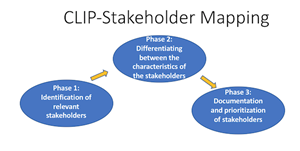
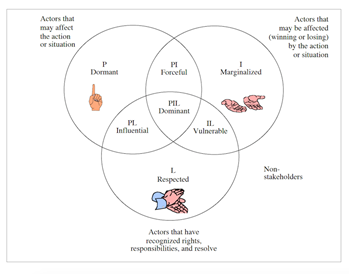
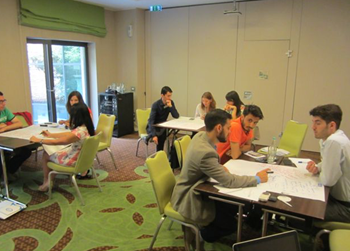
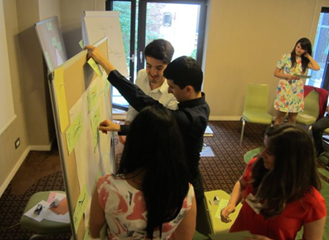
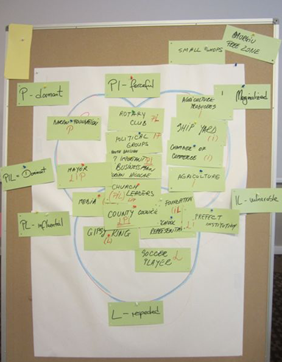
No Comments